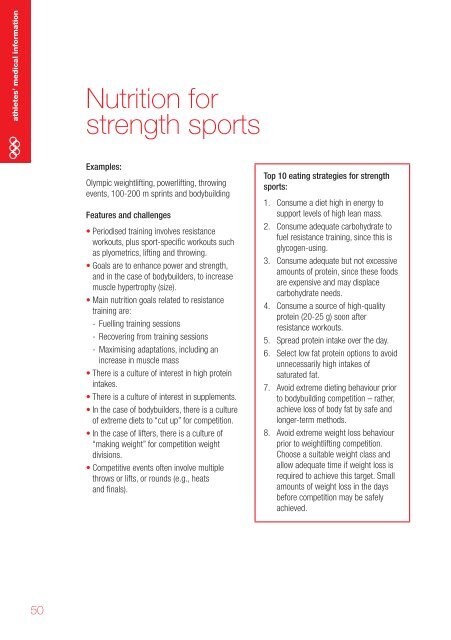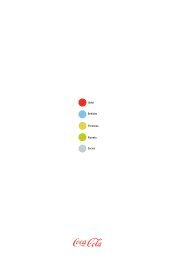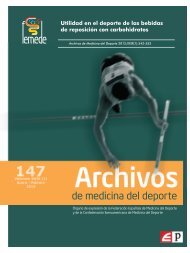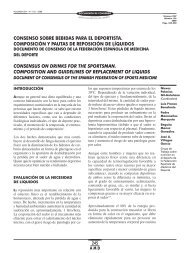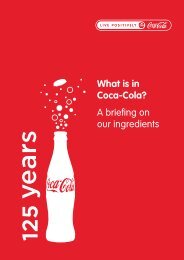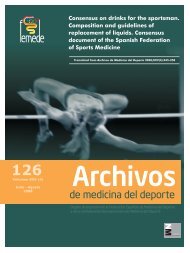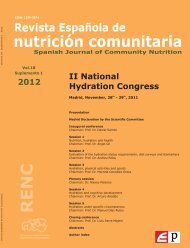Nutrition for Athletes - Coca-Cola
Nutrition for Athletes - Coca-Cola
Nutrition for Athletes - Coca-Cola
You also want an ePaper? Increase the reach of your titles
YUMPU automatically turns print PDFs into web optimized ePapers that Google loves.
athletes’ medical in<strong>for</strong>mation<br />
<strong>Nutrition</strong> <strong>for</strong><br />
strength sports<br />
Examples:<br />
Olympic weightlifting, powerlifting, throwing<br />
events, 100-200 m sprints and bodybuilding<br />
Features and challenges<br />
• Periodised training involves resistance<br />
workouts, plus sport-specific workouts such<br />
as plyometrics, lifting and throwing.<br />
• Goals are to enhance power and strength,<br />
and in the case of bodybuilders, to increase<br />
muscle hypertrophy (size).<br />
• Main nutrition goals related to resistance<br />
training are:<br />
- Fuelling training sessions<br />
- Recovering from training sessions<br />
- Maximising adaptations, including an<br />
increase in muscle mass<br />
• There is a culture of interest in high protein<br />
intakes.<br />
• There is a culture of interest in supplements.<br />
• In the case of bodybuilders, there is a culture<br />
of extreme diets to “cut up” <strong>for</strong> competition.<br />
• In the case of lifters, there is a culture of<br />
“making weight” <strong>for</strong> competition weight<br />
divisions.<br />
• Competitive events often involve multiple<br />
throws or lifts, or rounds (e.g., heats<br />
and finals).<br />
Top 10 eating strategies <strong>for</strong> strength<br />
sports:<br />
1. Consume a diet high in energy to<br />
support levels of high lean mass.<br />
2. Consume adequate carbohydrate to<br />
fuel resistance training, since this is<br />
glycogen-using.<br />
3. Consume adequate but not excessive<br />
amounts of protein, since these foods<br />
are expensive and may displace<br />
carbohydrate needs.<br />
4. Consume a source of high-quality<br />
protein (20-25 g) soon after<br />
resistance workouts.<br />
5. Spread protein intake over the day.<br />
6. Select low fat protein options to avoid<br />
unnecessarily high intakes of<br />
saturated fat.<br />
7. Avoid extreme dieting behaviour prior<br />
to bodybuilding competition – rather,<br />
achieve loss of body fat by safe and<br />
longer-term methods.<br />
8. Avoid extreme weight loss behaviour<br />
prior to weightlifting competition.<br />
Choose a suitable weight class and<br />
allow adequate time if weight loss is<br />
required to achieve this target. Small<br />
amounts of weight loss in the days<br />
be<strong>for</strong>e competition may be safely<br />
achieved.<br />
50


